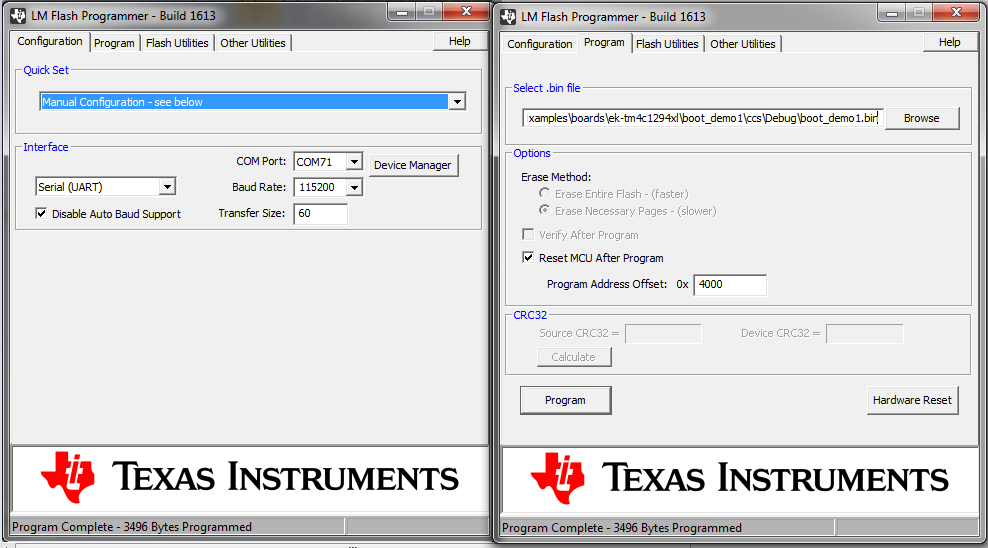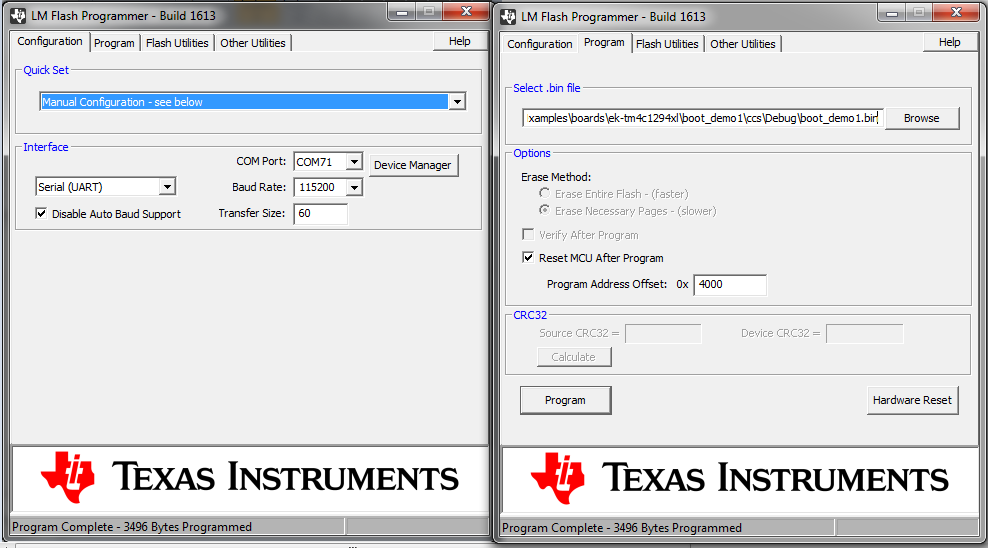Hi,
As few threads already created I have an issue with the LM flash programmer and the boot serial.
I'm working on the TM4C1294XL-Launchpad, so with the 25MHz crystal, with CCS 6.1.3 and LM Flash Programmer Build 1613.
I programmed the TM4C with the example boot_serial, I changed the adresses APP_START_ADDRESS 0x00020000 and VTABLE_START_ADDRESS 0x00020000 to match with the application I want to bootload which starts at this adress. The application is the hello using UART BTW.
I configured the LM Flash Programmer like that and took my hello.bin
When I try to program I have the following message :
My Board is connected on the USB debug and I have all jumpers on JP4 and JP5 and JP1 has a jumper on ICDI only.
I think I only missed something basic, I read much threads and documentation but didn't find any solution to my issue.
1/ Did someone already meet an issue like that ?
2/ Should I put a Program Adress Offset when using the BootLoader ?
Regards,
John







